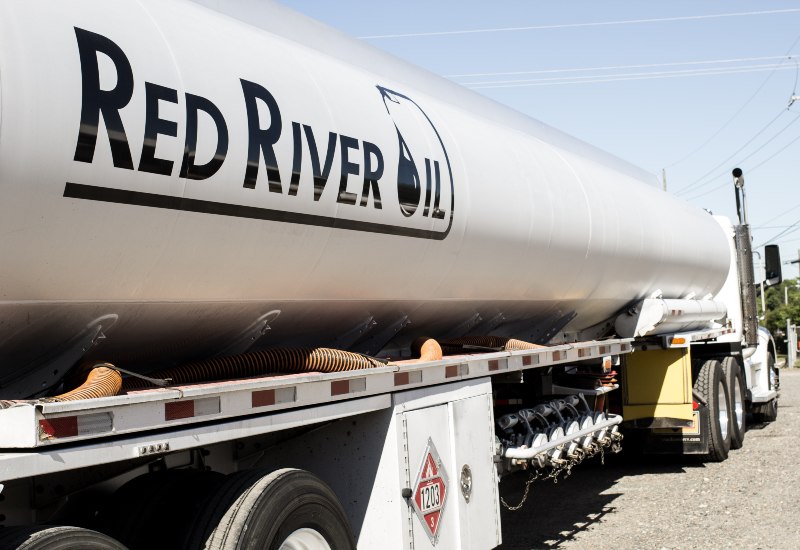Fleet Management Tips: How to Track Fuel Expenses
Keeping up with fuel costs can be tricky, especially when managing a busy fleet. But fuel is one of the largest expenses for any commercial operation with vehicles on the road, so you can’t deny the impact of this overhead cost. If you’re a facility or operations manager, you’ve likely felt the pinch of rising prices and untracked spending. That’s where fleet fuel management comes in.
Fuel management involves more than just filling up the tank when it gets empty. It’s a complete system for tracking how much fuel your vehicles use, where it goes, and how much it costs. With a fleet fuel management system, you have the tools you need to collect data, control costs, and make better choices for your company’s bottom line. Consider the importance of tracking fuel expenses and what steps you can take to build a stronger, more efficient fleet management strategy.

Why Tracking Fuel Expenses is Crucial for Fleet Management
Tracking fuel costs is necessary for your fleet to run efficiently and stay profitable. Here’s why:
- Catch waste and theft quickly: Without a proper tracking system, it’s easy for fuel to go missing. Drivers may leave their engines running too long or even top off their personal vehicles. A fleet fuel management system shines spotlight on these problems so you can put a stop to them.
- Set and meet benchmarks: Knowing how much fuel each fleet vehicle uses gives you a benchmark. Once you have one, you can push for improvement. For example, if most vehicles average 8 miles per gallon, but a few aren’t even hitting 6 mpg, it’s time to dig in and fix the underlying cause.
- Spot maintenance issues early: A sudden spike in fuel use might indicate an engine problem, bad tires, or some other hidden problem. Fuel expense tracking lets you catch these early, saving you from prolonged fuel waste and bigger repairs later.
- Plan strategically: When you track fuel use by vehicle, driver, and route, you can plan better. You might find that certain routes waste fuel, or that older trucks are costing more than they should. This information helps you decide what to change, what to replace, and how to train better.
How to Improve Fleet Fuel Management
Fuel may seem like an unavoidable cost you can’t control, but there’s plenty of room to optimize it—if you know where to look. Follow these 10 tips to help your fleet use less, save more, and keep things running efficiently.
1. Use a Fleet Fuel Management System
A commercial fleet fuel management system collects real-time fuel use, driver behavior, idle time, and mileage data by looking at fuel cards, GPS tracking, and vehicle diagnostics. This system cuts manual tracking and helps spot strange patterns, like a driver who fills up more often than others on the same route.
2. Issue Smart Fuel Cards
Fuel cards are simple to use and easy to manage. They limit when, where, and what type of fuel drivers can buy. Every transaction is logged to ensure clean, accurate records and eliminate the guesswork from your monthly reports.
3. Enforce Regular Vehicle Maintenance
Poor maintenance wastes fuel because engines run less efficiently, tires lose pressure, and filters become clogged. As a result, neglected vehicles can easily burn 10% to 20% more fuel. Build a schedule for routine checks and stick to it.
4. Monitor and Manage Idling
Idling burns fuel without getting you anywhere. Many trucks use up to half a gallon of fuel per hour just sitting still. Implement telematics to track idle time per vehicle and driver. Then work with your team to keep it low.
5. Use Strong Route Planning
The best routes aren’t always obvious. The shortest distance may not be best if it has more traffic, hills, construction, or stoplights. Use GPS or mapping software to plan smarter paths that save fuel and avoid wasting time.
6. Analyze Reports Regularly
Data only helps if you use it. Check reports weekly or monthly to see where fuel goes. Look at cost per mile, average fill-ups, or sudden changes. Keep an eye on trends and address problems before they pile up.
7. Train Drivers on Fuel-Efficient Habits
Drivers play a big part in fuel efficiency. Hard braking, fast starts, long idling, and speeding all cost extra fuel. Train your team to drive smoother, stay within posted limits, and shut off the engine when parked. Even these small changes can lower fuel use across the fleet.
8. Reward Efficient Driving
Along with training your drivers, incentivize them to save fuel. Set up a system that tracks who uses the least fuel per mile and keeps their idle time low. Rewards, bonuses, or even simple recognition show drivers their efforts matter, making them more likely to maintain good habits.
9. Right-Size Your Fleet
Bigger isn’t always better. An oversized truck uses more fuel than needed, and having too many vehicles in the fleet leads to underuse. Take stock of your vehicles and match each one to its job to cut fuel and maintenance costs.
Choose Red River Oil Company for Fuel Management Systems
Red River Oil Company draws on over 100 years of combined experience to help you build the right fleet management solutions. We’re locally owned and operated with four strategic locations in Ashdown, Texarkana, Foreman, and Idabel. We develop individual service plans for fleets of all sizes and back them with exceptional service and attention to detail. Contact us to request customized solutions for your Texas, Arkansas, Oklahoma, or Louisiana fleet.

